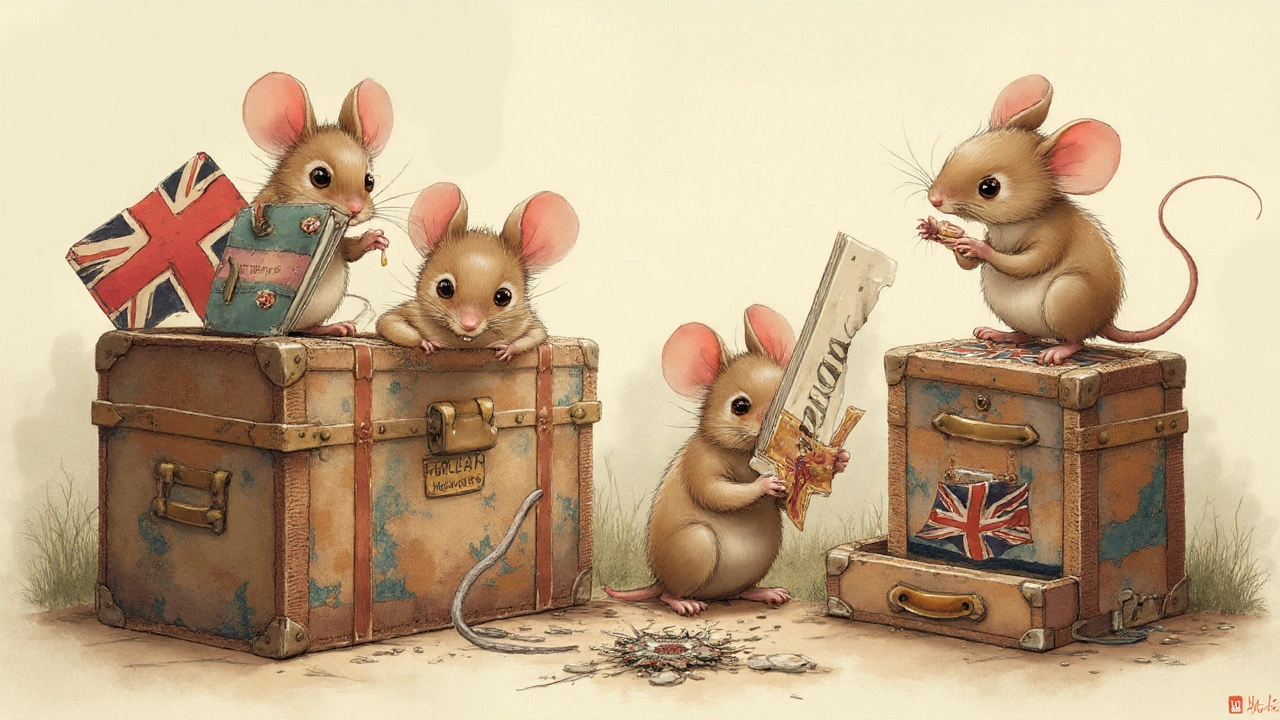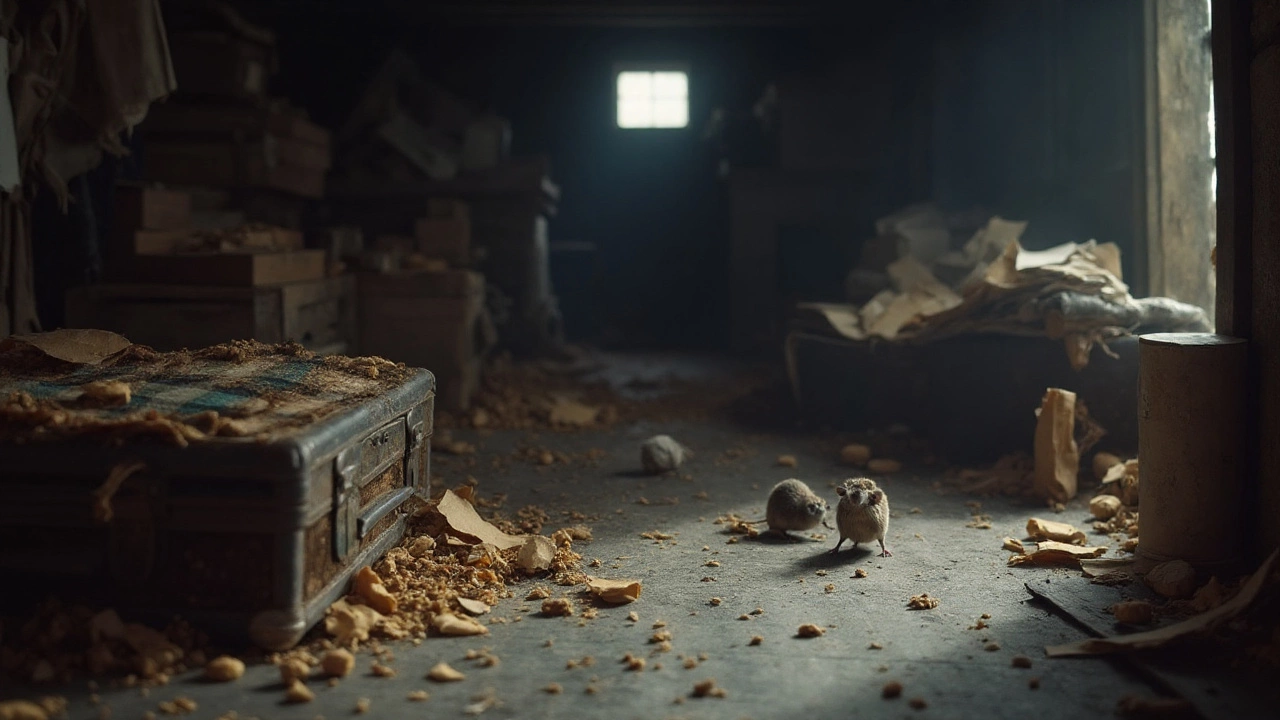You wouldn’t believe what a single mouse can do behind a locked storage door. I once heard about a guy in Brunswick who came back after a year only to find his boxed wedding suit chewed to shreds, the lining used by mice as a nursery. Out of sight, out of mind? Not with mice. These little invaders are surprisingly common in storage spaces all over Melbourne—and much, much worse if you’re stashing soft furnishings, books, or cardboard boxes.
How Mice Find Their Way In
Mice don’t need much—just a crack as thin as a pencil and they’re in. Few people picture mice prowling around self-storage corridors, but inspections in Australian units have revealed them everywhere from beneath metal doors to nestling in insulation gaps. They’re not picky eaters, either. Even if you haven’t stashed food, they’ll gnaw anything cellulose-based—cardboards, paper, even plastic bins.
If you’ve visited your storage unit at night, you might even have heard their squeaks echoing off the walls. Their motivation? Shelter, food crumbs left behind by other renters, or just the warmth of tightly packed boxes. One tiny mouse can leave 50 droppings a night, and their urine leaves behind a musty, unmistakable smell that soaks into whatever you’ve stored.
Some storage facilities use ultrasonic repellents, but mice quickly get used to these sounds. Most rely instead on basic pest-proofing (think steel weather-strip seals and regular sweeps), but no system’s perfect. Ask the staff: when was their last pest inspection? Do they fill in holes and check corners? Or are they trusting renters won’t notice a few chew marks?
If you’re in a drainage-prone area of the city or storing in older facilities, the risks only go up. Mice follow pipes just like city rats, squeezing through gaps under roller doors or broken vents. One survey in Victoria found more than 40% of older storage buildings had some level of rodent activity by winter’s end.
The Mess and Damage Mice Cause
People think of mice as harmless, but the reality’s a nightmare. The cost of a mouse problem adds up fast. It’s not just droppings – they’ll chew wiring, wood, plastic, even aluminum if hungry. In storage units, fabric furniture, mattresses, rugs, books, and photographs take the worst hit. Anything stored in cardboard becomes quick nesting material—watch for shredded box corners and fine particles around the floor.
Modern self-storage contracts often mention damage caused by rodents, and, here’s the kicker, they rarely ever cover it. A quick look at the PDS (Product Disclosure Statement) for mainstream storage insurance in Australia shows mice-related damage falls under “negligence” if it’s considered preventable by proper packing.
Let’s put this into context with some actual numbers:
| Type of Damage | Average Cost (AUD, 2024) |
|---|---|
| Furniture Reupholstery | $600 - $2,500 |
| Book/photo restoration | $100 - $1,200 |
| Electrical repairs | $350 - $1,500 |
| Pest eradication | $150 - $400 |
It only takes a few mice for mold and bacteria levels to spike in an enclosed space. Their droppings and dander can trigger asthma or allergies, especially when you open up stored soft goods or clothing after months of inactivity. Don’t brush this off—Hantavirus, collected in dust from mouse droppings, has sent perfectly healthy people to hospital and is well-documented even in Australian public health journals. If you smell ammonia when you open your unit, mice have moved in.
Besides the health risks, mice love wires. The insulation around electrical cables feels good on their teeth and helps keep nests warm. If they chew through cords of electronics you’re storing, those items are basically ruined—and you might not notice the damage till years later when you finally plug them in.

Signs Mice Have Invaded Your Storage Space
Don’t wait till you see a mouse dash across the concrete. Usually, the signs are much subtler. If something feels "off," trust your nose first: that sharp, musky odor doesn’t come from fresh boxes. Look for tiny black pellets (the droppings), oily grey smudges along skirting boards (from their fur), or bits of insulation poking out from cracked corners.
A mate of mine who managed storage units in Footscray told me they’d check forgotten units every quarter and almost always found damage in boxes pushed against the back wall. Mice feel safest in the shadows, tunneling behind whatever’s stacked the lowest. That means the first row you unpack often looks fine, but take a look behind and your heart sinks.
- Mice in storage units will leave steady, two-centimeter holes in plastic bags or plastic bins.
- Shredded paper or soft debris means they’re nesting somewhere nearby.
- Gnaw marks along wooden furniture legs or even on books’ edges.
- Scratching sounds if you visit in the evening or early morning.
Listen: if you want peace of mind, inspect regularly. Even the best-sealed places in central Melbourne or the suburbs aren’t immune—the 7-day rental places at the city’s edge get just as many complaints as the upmarket, climate-controlled ones.
How to Mouse-Proof Your Storage Unit
If you’re already picturing your boxed clothes chewed up, don’t despair yet. You can make your storage unit almost mouse-proof with a little effort and know-how—even in big, shared facilities. Here’s how:
- Seal Everything: Avoid cardboard boxes altogether if possible. Store items in hard plastic tubs with tight lids. Even mice that manage to get into your unit will have a much harder time breaking into these bins.
- Wash Everything Before Storage: Fabrics, clothes, and even old toys hold scents that attract rodents. Launder anything that might draw interest and double-bag it for extra protection.
- No Food, Ever: This should be obvious, but sometimes people stash camping gear or emergency food packs. Remove all edible goods—don’t risk it for a couple of snacks.
- Raise Everything: Try to keep boxes and bags at least ten centimeters off the ground on pallets or low shelving. Mice rarely climb unless there’s something to hold onto.
- Use Natural Deterrents: Some renters swear by peppermint oil cotton balls tucked in boxes—mice hate the scent. Just remember to refresh them every month. If you want the chemical-free route, there are natural sachets made specifically to repel rodents.
- Regular Visits: Visit your unit every few weeks, even if you don’t need anything. The more you’re around, the less appealing it is for critters. Bring a torch and check those back corners for droppings or chewed material.
- Check Your Facility’s History: Don’t be shy—ask when they last saw any sign of mice. Facilities committed to pest management will have a clear process and regular inspections. If staff look uncomfortable, that’s a red flag.
- Photograph Before Locking: Take photos of how you left things inside, so if anything gets damaged you can show the “before” state later. It helps with insurance, too, if you’re covered.
- Label and Date Everything: If anything needs rotating or checking, a label with last checked date helps you keep tabs. Set a calendar reminder to revisit and inspect.
Don’t forget, insurance nearly always excludes rodent damage unless you can prove you packed and stored everything properly, so most people end up covering losses out-of-pocket. I’ve seen people lose $3,000 in ruined vintage comics—all for lack of a fifty-cent peppermint oil packet.
If you already see signs of invasion, get on it fast. Alert the manager, remove damaged goods (don’t try to salvage them at home; they may harbour harmful bacteria), and get a licensed pest controller involved. Sometimes, it’s worth moving units if the facility doesn’t seem committed to pest control—especially if you see several traps already set out (that’s not a sign they’re winning, by the way, that’s usually a sign they have an active problem).


